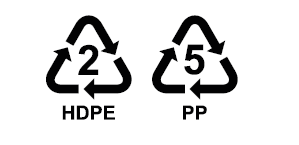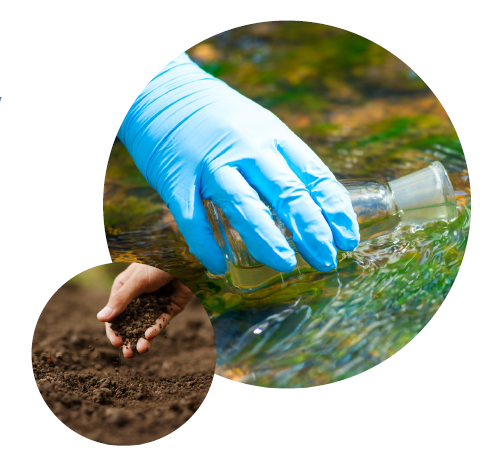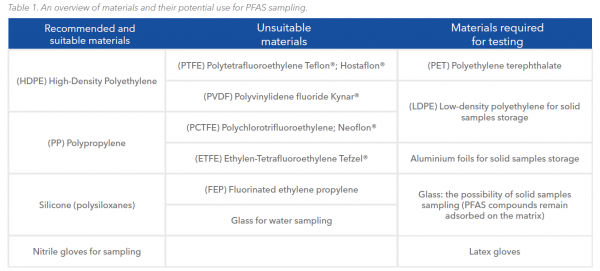Sampling Recommendations for PFAS to Maximize Data Quality
Download PDF
EnviroMail_02_Europe_Sampling recommendation for PFAS to maximize Data Quality
Accurate PFAS analysis begins already with proper collection of samples.
ALS laboratories provide accredited analyses of a wide range of per/polyfluoroalkyl (PFAS) compounds using highly sensitive LC-MS methods. A critical point in the precise analysis of PFAS compounds is the representative sampling, which ensures accurate analytical results. Improper sampling containers and procedures can cause undesired sample contamination or, conversely, loss of analytes due to their adsorption onto the sampling material.
PFAS sampling has its own specific rules…
Nowadays, PFAS are regarded as relatively well-known environmental and food contaminants. These are harmful, chemically, and thermally stable substances that can be detected practically anywhere. Due to their structure and unique physicochemical properties, they enable the production of a wide range of industrially produced products, such as electronics, firefighting foams, textiles, or packaging.
The properties and parameters of PFAS compounds must be considered within their analysis, starting from the sampling of the tested matrices. Thus, for understandable reasons, PFAS compounds can be present in packaging materials, sampling containers, detergents, or materials used to manufacture laboratory tools and equipment.
Therefore, correct and precise analysis must eliminate the possibility of occurrence false-positive results, which can be easily caused by secondary contamination of the tested sample in case of using
incorrect sampling materials. The use of unsuitable sampling containers and tools can lead to unwanted contamination or loss of PFAS analytes in the sample even before it is transported to the laboratory.

ALS Recommended Procedure for Sample Collection, Storage, and Transport to ALS Laboratories
- If possible, use only tested ALS PFAS sampling containers for sampling water and soil. The containers are „PFAS-free“ and are available at any of our branches.
- If ALS PFAS sampling containers are not available, preferentially use plastic containers made of HDPE (high-density polyethylene) or PP (polypropylene) material. If possible, have the sampling containers tested for the presence of PFAS compounds beforehand.
- A summary of suitable and unsuitable sampling containers and materials is provided in Table 1.
- Use sampling containers and consumables (gloves, sampling tools) only once.
- When sampling water, avoid using glass sampling containers. Untested glass containers could cause a strong adsorption of PFAS compounds to the walls of the containers.


Sampling & Transport
ALS PFAS tested containers
(Alternatively: HDPE/PET/PP pre-tested containers)
Water Sampling
- Standard method: 125 mL (LOR ≥ 0.005 μg/L)
- Low-limit method: 250 mL (LOR ≥ 0.0001 μg/L)
Fill the sampler with water to the brim and close tightly.
Soil Sampling
- Weight of sample: 50 g
Take the sample in the designated container (or plastic bag, or glass container).
Transport
- After the collection, samples should be stored in a refrigerator at a temperature of 2 – 5°C.
- Transport samples to ALS laboratories or ALS branches within 48 hours of sample collection.
- We recommend when transporting samples use cooling boxes with a cooling insert.
Legislation
Recommendations for sample collection and the quality of sampling material are provided and discussed in the following directives:
ISO 21675:2019: HDPE or PET containers recommended for sampling, containers should be
washed with a mixture of methanol:water (1:1).
Draft EPA method 1633: HDPE bottles with HDPE/PP caps without the need for sample preservation.
EPA method 537.1: PP bottles with PP caps, Trizma® (Trimethamin) as a preservative for samples.
There is a large variety of sampling containers and materials available. If the customer does not have the possibility to obtain the tested and recommended ALS PFAS-sampling containers, a simple rule should be followed when choosing containers. Containers MUST NOT be made of materials that contain fluorine atoms in their structure. The optimal solution is to have the sampling containers tested for the presence of PFAS compounds before sampling.
References & Legislation:
- PFAS Sampling Guidance (michigan.gov)
- Draft Method 1633 Analysis of Per- and Polyfluoroalkyl
Substances (PFAS) in Aqueous, Solid, Biosolids, and Tissue Samples by LC-MS/MS;
DRAFT - August 2021 (epa.gov) - EUR-Lex - 32020L2184 - EN - EUR-Lex (europa.eu)

